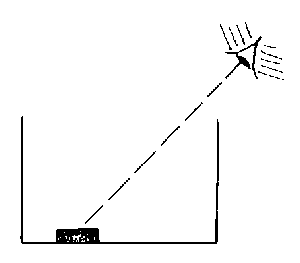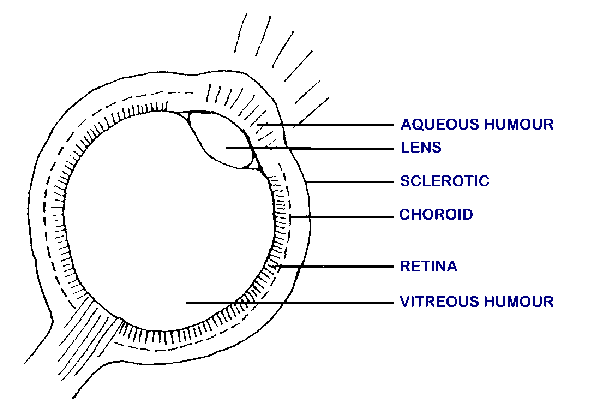AshvinP wrote: ↑Sun Mar 05, 2023 2:20 pmAnthony66 wrote: ↑Sun Mar 05, 2023 11:56 am With that said, I'm a little disappointed that this thread seems to have gone undeveloped. The question of how the imagination-intuition of higher-order beings precipitate into percepts within our field of conscious phenomena is something I'd love to gain a greater insight of. You started to address this here with the distinction between immediate perceptions, memory images, and imaginative images. The diverse character of these makes sense.
Where I struggle is bridging the divide between the various metaphors that have been employed here - carrier waves, Moiré patterns, fractals etc. - and the standard models of say visual perception as per ChatGPT:On the one hand we have the causal chain of light, corneas, retinas, photoreceptor cells, and nerve impulses etc. The attachment of conceptual content to these perceptual elements and the identification of the interactions being a construction of our thinking I'm happy with. But how do these percepts "get in" to my field of conscious awareness? High order beings precipitate those precepts to which we add our thinking. Is it something akin to Berkeley's idea where perceptions arise directly out of the omnipotence of God? I can't quite join the dots.Light travels as electromagnetic radiation and enters the eye through the cornea, a transparent outer covering. The cornea bends the light and focuses it onto the lens, which further refracts the light and adjusts its focus. The lens then projects the light onto the retina, a thin layer of light-sensitive cells located at the back of the eye. The retina contains two types of photoreceptor cells: rods and cones. Rods are more sensitive to low levels of light and are responsible for our vision in dim light conditions. Cones are responsible for color vision and work best in brighter light conditions. When light hits the photoreceptor cells, it triggers a series of chemical and electrical events that generate nerve impulses. These impulses travel along the optic nerve to the brain, which processes the information and creates a visual image.
Anthony,
I am glad you revisited that post from Cleric, as I am also interested in following that phenomenology further. On that note, in regards to your question, I think we need to clearly distinguish between metaphysics and phenomenology to begin with.
When we ask about higher order beings precipitating percepts into our field of consciousness and so forth, we are asking for a metaphysical model. We want to view the whole process from the side, like there are Divine beings who are radiating perceptual structures into our conscious field, which we then perceive and think about. This secretly embeds the assumption that our current concepts and conceptual templates are adequate to understand what actually happens in the first-person process of cognition-perception. Notice all metaphysical models presuppose we can borrow things from our current understanding, which is generally an understanding of how inanimate objects behave, and apply them across the board to the phenomena of life, soul, and thinking (which is what the quote you shared does). A phenomenology, in contrast, naturally leads us to entirely unfamiliar ways of observing and thinking through these intimate life, soul, and thinking processes which unfold in our stream of becoming. That is, if we remain open to the fact that our current opinions, assumptions, theories, etc. should be put aside, should be sacrificed for the time being, if we want the givens of experience to shine forth and guide our reasoning.
Does that make sense?
With the question of how perception arises in relation to our will-thinking, we are implicating the lawful spaces of soul and spirit. These are living spaces with unique lawfulness, not reducible to the merely physical forces we are familiar with in secular science, which by themselves only lead to decay and death. I am sure you remember the detailed post Cleric gave on Levin's models in response to a question you asked. We need to try and keep all of that in mind. Maybe it will help to revisit it again. I will leave it here for now, because I don't have a clear sense of how to articulate my thoughts further and maybe Cleric is already writing something in response. Both he and Steiner clearly show there are viable ways of articulating these unfamiliar dynamics and building a gradient of understanding between our familiar habits of thinking and the yet unfamiliar modes which alone can elucidate the phenomena of life, soul, and spirit. We need to trust that our living and energetic thinking can reach out beyond our current state and illuminate the corridors we otherwise navigate in the most dim and clumsy way with our abstract concepts, as long as we are willing to sacrifice the personal preferences, opinions, etc. which constantly tempt us to resist a deeper understanding of these archetypal processes.
There may be some interest in considering the following.
***
https://rsarchive.org/Lectures/GA320/En ... 25p01.html
Truth is that where we simply have to do with images or pictures, the physicists speak of all manner of other things, — light-rays and so on. The “light-rays” have become the very basis of materialistic thinking in this domain. To illustrate the point more vividly, we will consider another phenomenon. Suppose I have a vessel here (Figure IIId), filled with liquid — water, for example. On the floor of the vessel there is an object — say, a florin. Here is the eye. I can now make the following experiment. Omitting the water to begin with, I can look down at the object and see it in this direction. What is the fact? An object is lying on the bottom of the vessel (Figure IIIc). I look and see it in a certain direction. Such is the simple fact, but if I now begin explaining: there is a ray of light proceeding from the object to the eye, affecting the eye, and so on, — then, my dear Friends, I am already fancying all kinds of things that are not given.


Now let me fill the vessel with water or some other liquid up to here. A strange thing happens. I draw a line from the eye towards the object in the direction in which I saw it before. Looking in this direction, I might expect to see the same as before, but I do not. A peculiar thing happens. I see the object lifted to some extent. I see it, and with it the whole floor of the vessel lifted upward. We may go into it another time, as to how this effect can be determined, by which I mean measured. I now only refer to the main principle. To what can this effect be due? How shall I answer this question, purely from the facts? Having previously seen the thing in this direction, I expect to find it there again. Yet when I look, I do not see it there but in this other direction. When there was no water in the vessel I could look straight to the bottom, between which and my eye there was only air. Now my sighting line impinges on the water. The water does not let my force of sight go through as easily as the air does; it offers stronger resistance, to which must give way. From the surface of the water onward I must give way to the stronger resistance, and, that I have to do so, comes to expression in that I do not see right down as before but it all looks lifted upward. It is as though it were more difficult for me to see through the water than through the air; the resistance of the water is harder for me to overcome. Hence I must shorten the force and so I myself draw the object upward. In meeting the stronger resistance I draw in the force and shorten it. If I could fill the vessel with a gas thinner than air (Figure IIIe), the object would be correspondingly lowered, since I should then encounter less resistance, — so I should push it downward. Instead of simply noting this fact, the physicists will say: There is a ray of light, sent from the object to the surface of the water. The ray is there refracted. Owing to the transition from a denser medium to a more tenuous, the ray is refracted away from the normal at the point of incidence; so then it reaches the eye in this direction. And now the physicists go on to say a very curious thing. The eye, they say, having received information by this ray of light, produces it on and outward in the same straight line and so projects the object thither. What is the meaning of this? In the conventional Physics they will invent all manner of concepts but fail to reckon with what is evidently there, — with the resistance which the sighting force of the eye encounters in the denser medium it has to penetrate. They want to leave all this out and to ascribe everything to the light alone, just as they say of the prism experiment: Oh, it is not the prism at all; the seven colours are there in the light all the time. The prism only provides the occasion for them to line up like so many soldiers. The seven naughty boys were there in the light already; now they are only made to line up and stand apart. The prism isn't responsible. Yet as we say, the colours are really caused by what arises in the prism. This wedge of dimness is the cause. The colours are not due to the light as such.

Here now you see it again. We must be clear that we ourselves are being active. We, actively, are looking with our eye, — with our line of sight. Finding increased resistance in the water, we are obliged to shorten the line of sight. What say the physicists on the other hand? They speak of rays of light being sent out and refracted and so on. And now the beauty of it, my dear Friends! The light, they say, reaches the eye by a bent and broken path, and then the eye projects the picture outward. So after all they end by attributing this activity to the eye: “The eye projects ...” Only they then present us with a merely phoronomical conception, remote from the given realities. They put a merely fancied activity in place of what is evidently given: the resistance of the denser water to the sighting force of the eye. It is at such points that you see most distinctly how abstract everything is made in our conventional Physics. All things are turned into mere phoronomic systems; what they will not do is to go into the qualities. Thus in the first place they divest the eye of any kind of activity of its own; only from outer objects rays of light are supposed to proceed and thence to reach the eye. Yet in the last resort the eye is said to project outward into space the stimulus which it receives. Surely we ought to begin with the activity of the eye from the very outset. We must be clear that the eye is an active organism.
***
That is a small excerpt from Lecture 3 of a 10-lecture series on phenomenological investigation of natural science and physics, particularly the phenomena of Light and colors. So as we can tell, there are no simple, neatly packaged, abstract answers to the actual living processes by which we cognize and perceive. There is a never-ending journey of energetic thinking which gradually unveils more and more layers of these deep Cosmic secrets. Ultimately these living processes we are familiar with and normally take for granted lead us into the very depths of Cosmic intents which unfold through the curvatures of Time potential over what appear to be aeons. So we should expect to be in it for the transincarnational long haul. Yet when we manage to gradually decondition from merely personal entanglements in our bodily sheaths, there is less and less concern that we won't figure everything out in the course of days, weeks, years, our current lifetime, or even immediately after death. It is only the perspective still wrapped up in such entanglements which feels pressured to get such answers now, usually in the form of abstract models, or to place its faith in some all-encompassing revelation in the future or after death.

